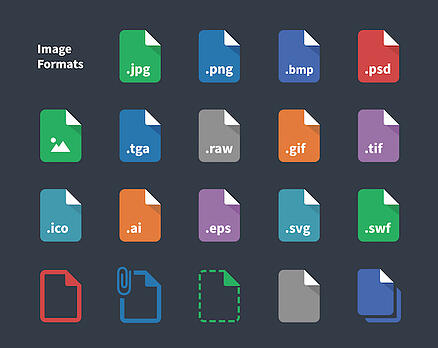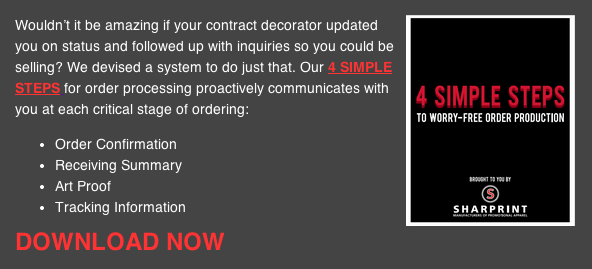

1. All Shapes & Sizes
First and foremost, submitting Vector art is always best. What makes vector art special is that everything is defined by shapes, as opposed to raster art’s pixels. This means the image never degrades at any size. A vector art image could be used for an inside tag, an all over print or a billboard without any pixelation or loss of quality. Vector images are very simple to change color, scale, orientation, etc. Also, vector images don’t need separations or the fees that go along with them, unless they are very very complex in color.
2. Changing Terrain
One often overlooked detail is the fact that the art being printed stays the same size, while the garment size changes. For example, if you wanted a design that goes around the collar, the collar is going to be a different size between a small shirt and a 2x and the art would need to accommodate that.
3. Bigger Is better
Well... when it comes to raster art anyway. To print your images cleanly we need raster art that is created with at least 150 DPI at size. That is, if you’d like your raster logo to print 10” wide, the image must have been created at 10”w with 150dpi or more and not scaled up from a lower res file. Having some resolution to spare gives you flexibility with print size.
4. Its What’s On The Inside That Counts
The simplest file types to work with are vector files which are .ai, .pdf, .eps and raster images which files ending with .psd, .jpg, .tff, etc. Keep in mind it is entirely possible that a .ai file could contain raster art and that a .psd file could contain vector art. Think of the files types as boxes. A refrigerator box probably has a refrigerator in it, but there’s an off chance that there could be an angry raccoon in there.
5. What The Font?
Text, when created in Photoshop or Illustrator, remains tied to the specific font associated with it on your system unless it is either rasterized (Photoshop) or expanded (illustrator). If we receive a file that contains unconverted text and we do not have that font, our systems will automatically replace it. Nobody wants to see Comic Sans when they wanted Trajan Pro.
6. Check It Out!
The proofs we make with your art serve a dual function. First, they let you know details about what, where and how we are going to print on your garments. Second, they serve as a guide for our production to create your vision. So, if the proof states that a Full Front print is going to be 10” wide and you want it to be 8”, let us know.
7. A Horse Of A Different Color
Inks are all at least a little transparent, especially dark blues (which its best to avoid if possible). If a garment is not white or very lightly colored, we need to lay down a layer of white ink to print on top of in order to keep the colors true. This is called an under base. It counts as a color on your order, so consider your color counts accordingly.
8. Its In The Details
The more specific you are with your needs, the better we can accomplish them. We want you to get what you want, but we won’t know unless you tell us.
FAQ
A: Bulk shipments refer to the transportation of large quantities of goods or products at once, usually using a single mode of transportation, such as trucks, trains, ships, or planes.
Q: What types of products can be shipped in bulk?
A: Almost any type of product can be shipped in bulk, including commodities such as grain, coal, or crude oil, as well as finished goods such as electronics, clothing, or food products.
Q: What are the advantages of bulk shipments?
A: Bulk shipments can offer several advantages, including cost savings due to economies of scale, reduced transportation time, improved inventory management, and reduced environmental impact compared to multiple smaller shipments.
Q: What are the potential challenges of bulk shipments?
A: Challenges with bulk shipments can include the need for specialized equipment or infrastructure, the risk of damage or spoilage during transportation, regulatory compliance issues, and potential disruptions due to weather, labor disputes, or other factors.
Q: How can I ensure the safe and efficient transportation of bulk shipments?
A: To ensure the safe and efficient transportation of bulk shipments, it's important to work with experienced logistics providers who have expertise in handling bulk shipments, use proper packaging and handling procedures, and maintain open communication throughout the transportation process. It's also important to comply with relevant regulations and safety standards, and to have contingency plans in place to address any unexpected issues that may arise.

Leave a Reply
Your email address will remain private and will not be shared.